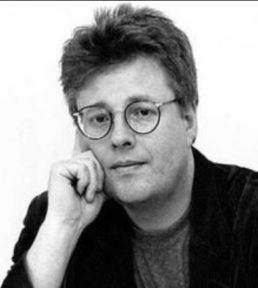These life stories may contain descriptions of childhood trauma and abuse, as well as images, voices and names of people now deceased. If you need help, you can find contact details for some relevant support services on our support page.
Best-selling Swedish author, Stieg Larsson (1954-2004), was in kinship care as a child.
Karl Stil-Erland Larsson was born in Vasterbotten in the northern area of Sweden.
When Stieg was one year old, his parents—his father, Erland, was a graphic designer at that point and his mother, Vivianne, worked in retail—decided to move south to Stockholm. Because they could not afford an apartment that would accommodate Stieg, they sent him to live with his maternal grandparents in Norrland.
The arrangement was not unusual at the time, Erland told me, explaining, “Everyone our age was living under the same circumstances.” Eventually the grandparents moved to Norsjo, even farther away, but the families exchanged visits at Christmas and Easter, and Stieg came home for the summer. “He knew who his parents were,” Erland insisted (McGrath).
Severin Bostrom, Stieg’s grandfather, was an important role model for the boy, being “strongly anti-fascist” (stieglarsson.com). His closeness to his grandmother was also influential in Stieg becoming pro-feminist.
Stieg did not live with his parents again until 1962 after his grandfather died.
Stieg was given a typewriter for his 12th birthday, and he spent most nights of his youth staying up writing, keeping his family awake with the drumming sound (stieglarsson.com).
As a young adult and after he had completed mandatory military service, Stieg travelled through Africa, working a variety of jobs to support himself.
Back in Sweden, Stieg Larsson worked as a graphic designer, like his father, but later became a respected journalist. He was a forthright campaigner for social justice reporting on the rise of neo-Nazis and speaking out against honour killings.
During the last 15 years of his life, he and his life companion Eva Gabrielsson lived under constant threat from right-wing violence. When a labor-union leader was murdered in his home by neo-Nazis in 1999, the police discovered photos of and information about the couple in the murderer’s apartment. So it was not without reason that the couple took precautionary measures (stieglarsson.com).
In 2001 Stieg Larsson began writing fiction thinking he would have a ten-volume series and an income into retirement. By the time he contacted a publisher, Larsson had already completed two of what is now known as The Millenium Trilogy—The Girl with the Dragon Tattoo, The Girl Who Played with Fire and The Girl Who Kicked the Hornets’ Nest.
Lisbeth Salander, a skilled computer hacker, is the lead character in Larsson’s series, along with a journalist, Mikael Blomkvist. Salander, according to an article published in 2009, was inspired by Swedish writer Astred Lindgren’s Pippi Longstocking, a nine-year-old who lives alone; her mother is dead and her father is missing at sea.
At the age of 13, Lisbeth Salander is detained in a psychiatric facility for children. She is released into foster care at the age of 15.
The first part of the trilogy was published in 2005; Larsson died of a heart attack on 9 November 2004.
Because they were not married, Eva Gabrielsson, Larsson’s partner for more than thirty years, has not benefited from the financial windfall that resulted from the Millenium Trilogy, nor has she been able to manage his literary estate.
Swedish journalist, David Lagercrantz, was selected by Stieg Larsson’s father and younger brother to continue the Millenium series. The Girl in the Spider’s Web (2015) was in part based on outlines left by Larsson. Lagercrantz then continued the series with The Girl Who Takes an Eye for an Eye (2017) and The Girl Who Lived Twice (2019).
References:
Cook, Rachel. “Interview: Stieg Larrson – by the woman who shared his life”. The Guardian, 21 February 2010. https://www.theguardian.com/books/2010/feb/21/stieg-larsson-eva-gabrielsson
McGrath, Charles. “The After Life of Stieg Larsson”. The New York Times Magazine, 23 May 2010. https://www.nytimes.com/2010/05/23/magazine/23Larsson-t.html
Rising, Malin. “Swedish Crime Writer Finds Fame After Death. Washingtonpost.com, 17 February 2009. https://www.washingtonpost.com/wp-dyn/content/article/2009/02/17/AR2009021700184.html
Stieglarrson.com. https://stieglarsson.com/
Image available here.
